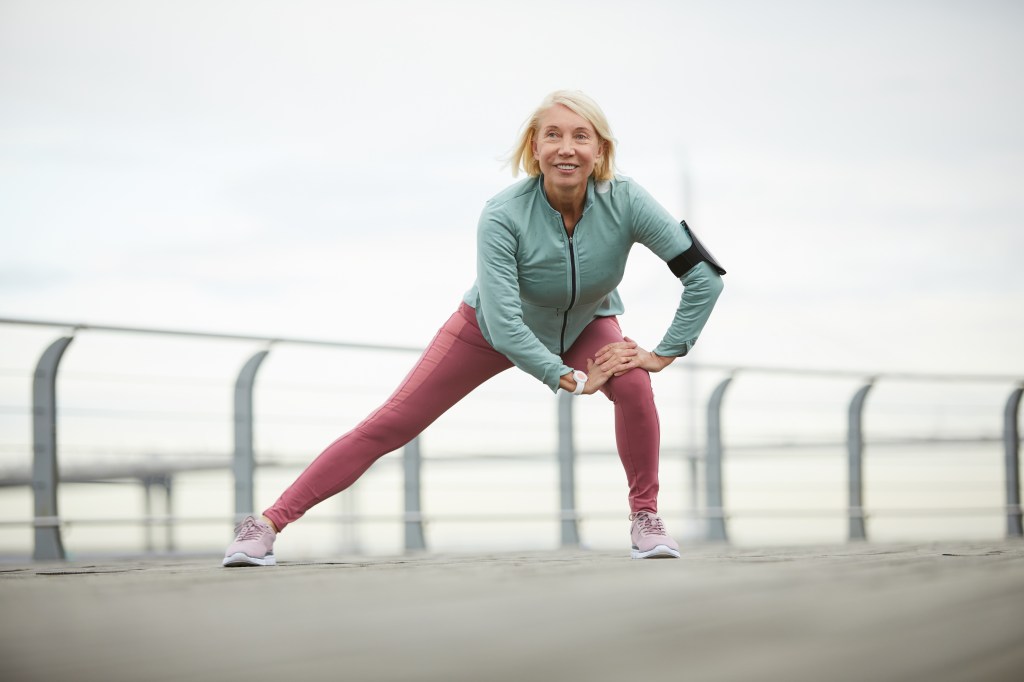What a pain!
It is not your imagination: our bodies are usually weak and we recover more slowly with age. Natural falls of muscle mass, strength, bone density, flexibility and reaction times significantly increase the risk of falls, a main cause of injury to major adults.
The good news is that there are ways to develop and maintain strength and coordination, regardless of your age. Helps to start soon and progress in a coherent way.
Next, fitness tips are displayed for every decade of life, be it a new athlete, an experienced athlete or a weekend warrior.
Your teenagers and 20
Finding a sport or physical activity that you enjoy at the beginning of life can be the key to keeping in shape and healthy over time.
I encourage patients to consider their personality and preferred childhood hobbies while making a realistic look at their time and availability.
It could be football, dance or exercises that you may not consider exercise, like walking or gardening. The group activities involved in your friends and colleagues can significantly increase well -being.
Once you select a pastime, you can set up -you are successful with practical goals. Your new extracurricular one should not suck much time immediately but gradually add it to your routine.
The World Health Organization recommends 150 minutes of moderate intensity exercise and two days of strength training a week.
Disease control and prevention centers also suggest 150 minutes, but they spread in five days.

I support starting slow and different exercise routines throughout the week to avoid injury.
Among the younger adults, I see the most acute traumatic injuries such as collisions and falls to participate in intense and high risk activities. Fortunately, its underlying tissue is usually healthy and cures faster.
Larger patients are prone to excessive injury, such as tendon breaks and muscle tears, due to natural wear and tear on the tissues that occur with aging.
Your 30 and 40 years
In the 1930’s and 40’s, it is about finding this balance between career creation, starting a family and trying to pursue an active and healthy lifestyle.
Workouts usually do less frequent and more intense, which can cause injury due to lack of consistent training and conditioning.
I usually advise patients to incorporate 10 -minute activity sections in their working day. Away from the counter, stroll and make the muscles move and the blood flows. You may want to raise a foot desk to avoid periods of prolonged sitting.
If you are moving, you can get more steps by moving farther or down a different traffic stop.
Weekend warriors could benefit from 30 minutes of strength training or aerobic activity twice a week to help reduce the risk of injury.
Another of the main problems at this stage of life is that your connective tissues usually make more rigid due to a decrease in water content. This means that you have less mobility in muscles and joints. Luckily, it can be mitigated with good stretch and proper warming.
The heating and recharging times are incredibly important. Warming prepares your body for exercise demands, increasing blood flow and helping to maximize the load capacity of muscles and tendons.
For their part, time of time help to calm the body and to return to normal. It is an opportunity to stretch, get flexibility and avoid dizziness or fainting after exercise.
In addition, a good nutrition is crucial in the performance of exercise and recovery. You need appropriate calories to feed your body and a sufficient amount of protein and carbohydrates to build muscle mass.
And for anyone over 35, I recommend visiting your primary care physician and undergoing a cardiology assessment before starting a fitness scheme.
Your 50 years
As you approach 50 and 60, start to lose some muscle mass, capacity for muscle creation and flexibility. This is very important to consider.
You focus on designing a routine that emphasizes aerobic form for your cardiovascular health and strength training for your health and bone muscle that will support you for the rest of your life.
I usually warn of an impact or high intensity exercise such as Hiit (high -intensity intervals training), running and sometimes basketball and tennis, especially if you already have pain or injuries that can get worse with these hobbies.
With weekend warriors, we discuss priorities and goals. These activities may be fine if they do not cause pain.
Start slow, build this tolerance and condition your body to exercise.
Stretching is paramount. It improves muscle petability, improving its ability to absorb strength and reduce the risk of injury.
You also need to ensure that you properly feed the body, as muscle and energy availability decreases and metabolism is slowing down due to important hormonal changes.
Changes in perimenopause and menopause may predispose women to injuries and pain more excessively, so they need to take additional precautions with repetitive activities. These women should also incorporate endurance and weight exercise training to maintain bone density.
Your 60 and beyond
For patients 60 years old and older, it usually recommends strength and resistance for muscle construction and the balance of training because it is important to avoid falls at all costs.
It is imperative to consider the health of the heart and bones. For the health of the bones, this is not just weight exercises. Every exercise helps with bone density.
I also encourage finding more social physical activities, such as the Picotball or the Golf, to encourage social connection.
It is essential to continue working and to continue healthy habits for longevity and general well -being.
Dr. Natasha Desai is an assistant professor at the Nyu Grossman School of Medicine and co -director of the Sports Medicine Center of Women of Nyu Langone Health. He is a medical doctor of primary care sports.
#ages #rule #exercise #weekend #warriors
Image Source : nypost.com
